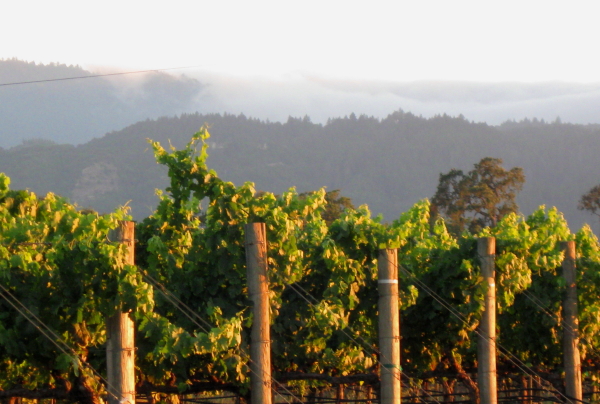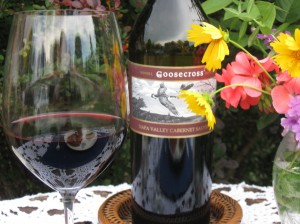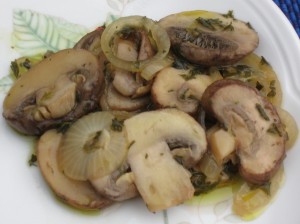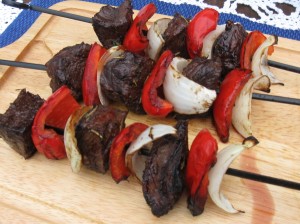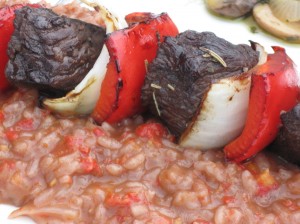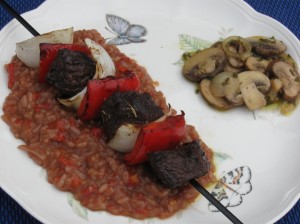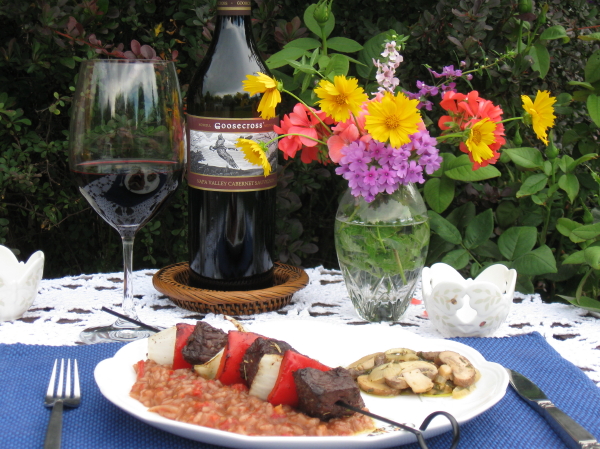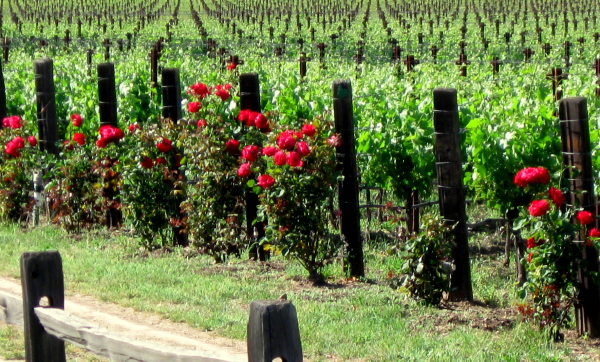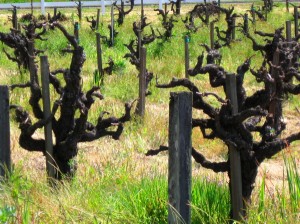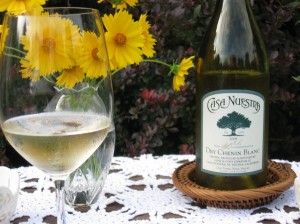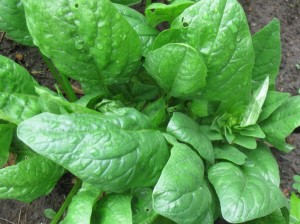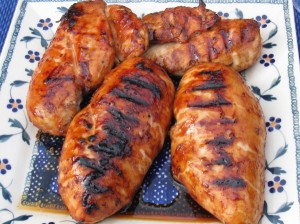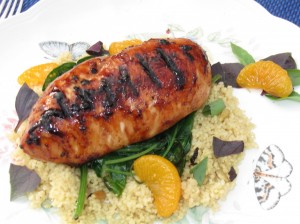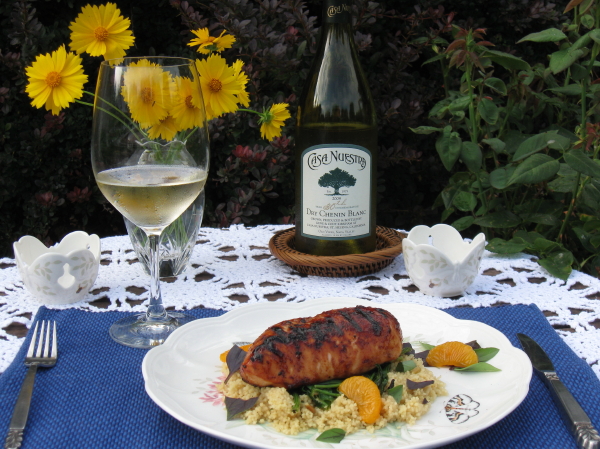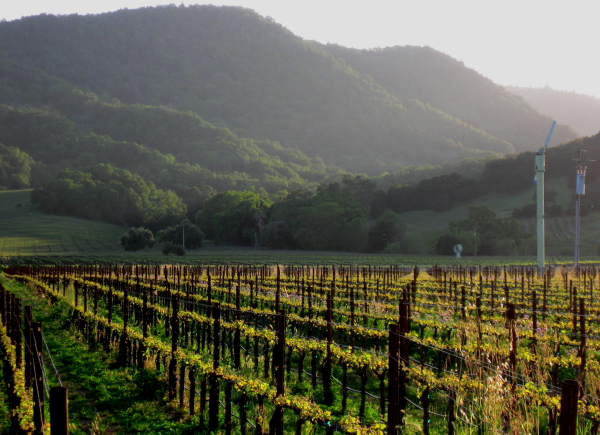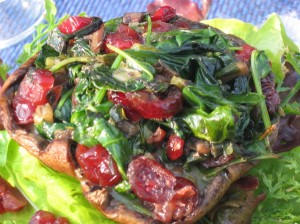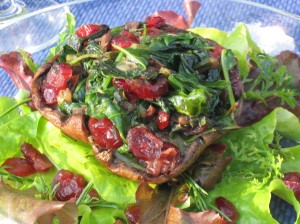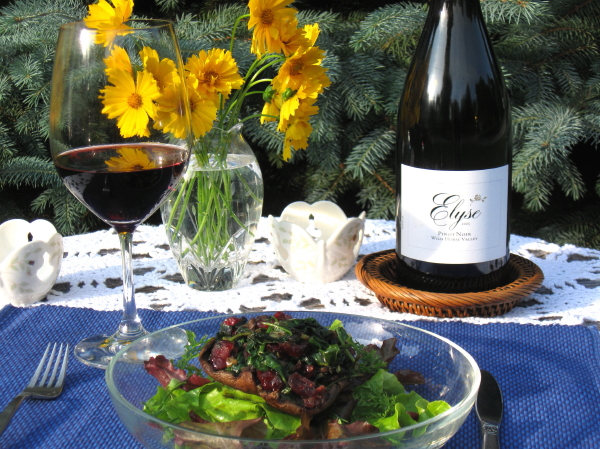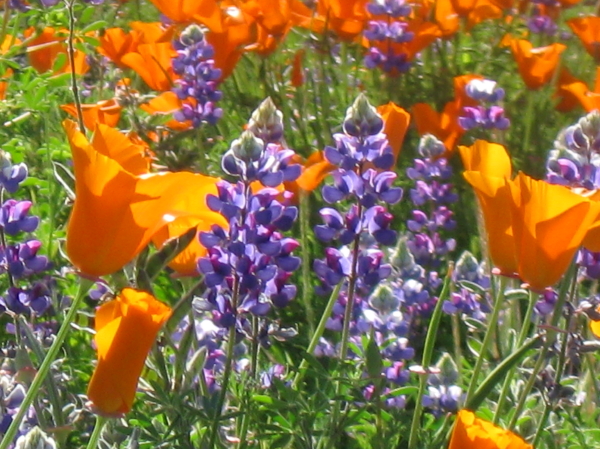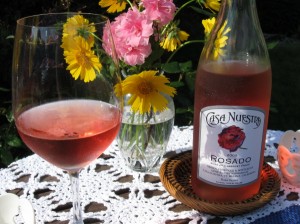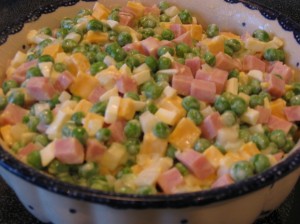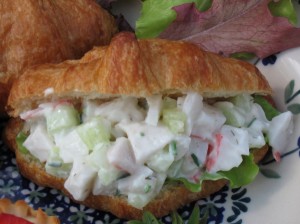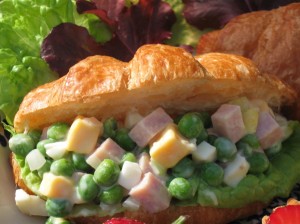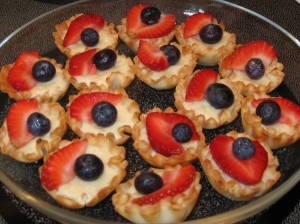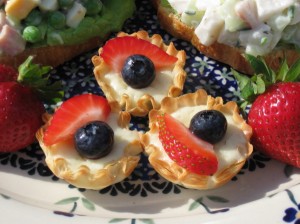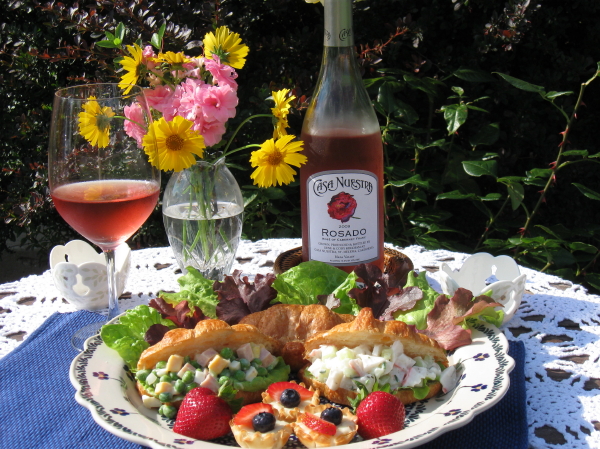Jun 23 2010
Muscat Love
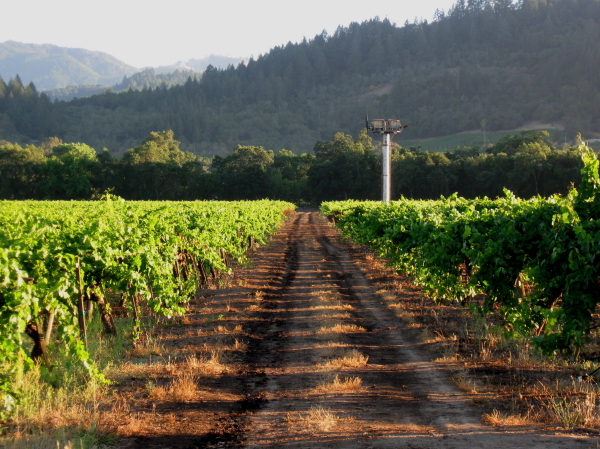
Summer … it has finally arrived in its entire splendor. Bringing warm lazy afternoons and fresh fragrant ripening stone fruit, late June in Napa Valley always manages to deliver a sense that time has temporarily stopped and that the rest of the world is far away. It is on days such as these that it is ideal to reach for a chilled Muscat wine and to gingerly sip without a care in the world.
Muscat wine, as those with a “sweet tooth” readily know, is a dessert wine. Made from the Muscat grape (which typically can be used for table grapes or making raisins), the wines can vary from lightly sweet and almost white in coloring to dark, syrupy sweet and often fortified. The grape itself is recognized for its musky and fresh grape-like flavors. While categorized as a dessert wine, the lighter Muscat wines (such as a “Muscat Blanc”) can be enjoyed simply with fresh fruit, nuts, soft cheeses, light summer vegetables and generally as an aperitif (as I reflected in last summer’s article titled, “Summertime Good Libations”). Pair it properly, however, and it can brilliantly accompany certain desserts.
Muscat dessert wines are often offered at various wineries throughout Napa Valley and more frequently than not they are heavy in sweetness with an almost syrupy character. The “cleaner” the wine in the mouth, my opinion is that the wine will reflect a better representation of the true identity of the grape. This implies that my tendency would be to veer away from the traditional Muscat sugar bombs and instead seek out the lighter Muscat Blanc. This summer, there is one winery in Napa Valley that has a current released vintage which flauntingly meets this expectation. Markham Vineyards (located in St. Helena along Highway 29) this summer has released an outstanding 2008 Muscat Blanc, which when served chilled embodies true perfection and would woo even the sharpest critic into “Muscat Love”.

Pouring the wine into small crystal wine goblets, the nose of the wine sets forth an enchanting perfume of lovely natural floral aromas that fill you with summer dreams and of sitting beneath a California white nectarine tree. In the mouth, the 2008 Muscat Blanc presents a melody of freshly picked stone fruit with predominant peach, followed by bright nectarine and a quick flash of ripe apricot on the finish. What sets this wine (and this winery’s vintage) apart from other Muscat wines presently available in Napa Valley, are the “clean” flavors of freshly picked ripe fruit and remarkably natural floral aromas. The wine’s sugars are beautifully balanced and the wine is devoid of any syrupy characteristics. Aside from being my personal pick for the summer, the 2008 Muscat Blanc is a poetic embodiment of summer romance as it aptly captures the natural aromas and flavors of California’s stone fruit season.
Given the special nature of this dessert wine and its delicate balance of sugar, the dessert pairing must keep a certain lightness in texture and sugar content. Keeping this in mind, this week’s menu hosts:
· California Peach Cream Puffs with Apricot Glaze and Fresh Stone Fruit Salad
The pastry for cream puffs is ideal in that it does not use any sugar and yet still maintains a light and air-puffed texture. Creating a whipped cream filling with fresh chopped California peaches and nutmeg will continue to keep the sugar in check. Stone fruit, such as peaches, white nectarines and apricots, have a terrific natural sugar for cooking such that additional sugar is not warranted. It is flavorful, aromatic and naturally juicy. Taking this into account, I created an Apricot Glaze to drizzle over the cream puff which not only uses yet another member of the seasonal stone fruit family, but it also adds a subtle dimension to the dish.
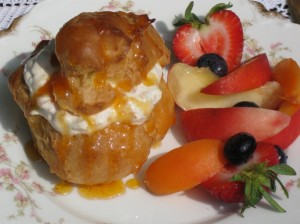
To accompany the California Peach Cream Puff, a simply medley of fresh stone fruit is served alongside. Ripe apricot, juicy white nectarine, and fresh peach slices mingle with lush strawberry halves and plump blueberries from the garden to create a naturally sweetened fruit salad. Ever so picturesque, this dish presents the opportunity to serve it upon dainty antique Limoges china which has been handled down through the generations since the late 1800’s. A dessert which is relatively simple to prepare becomes showy and elegant along small crystal dessert wine goblets.

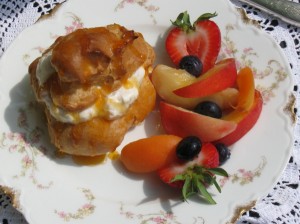
Taking the beautifully aromatic 2008 Muscat Blanc along with the fragrant dessert is akin to nuzzling into a bunch of white nectarine blossoms with a deep heavenly inhale. The harmonious balance of natural sugars with the light flavors of the cream puff pastry and whipped cream enamors the senses while picturesquely painting the palate with one of California’s finest fruit seasons. With each bite and drink of wine, it is impossible to resist lingering in the fading rays of summer evening sun, slowly sipping and gently savoring all that summer naturally has to offer.
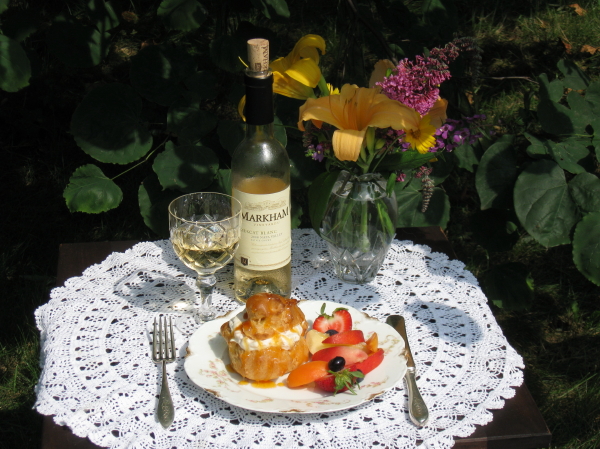
Comments Off on Muscat Love
